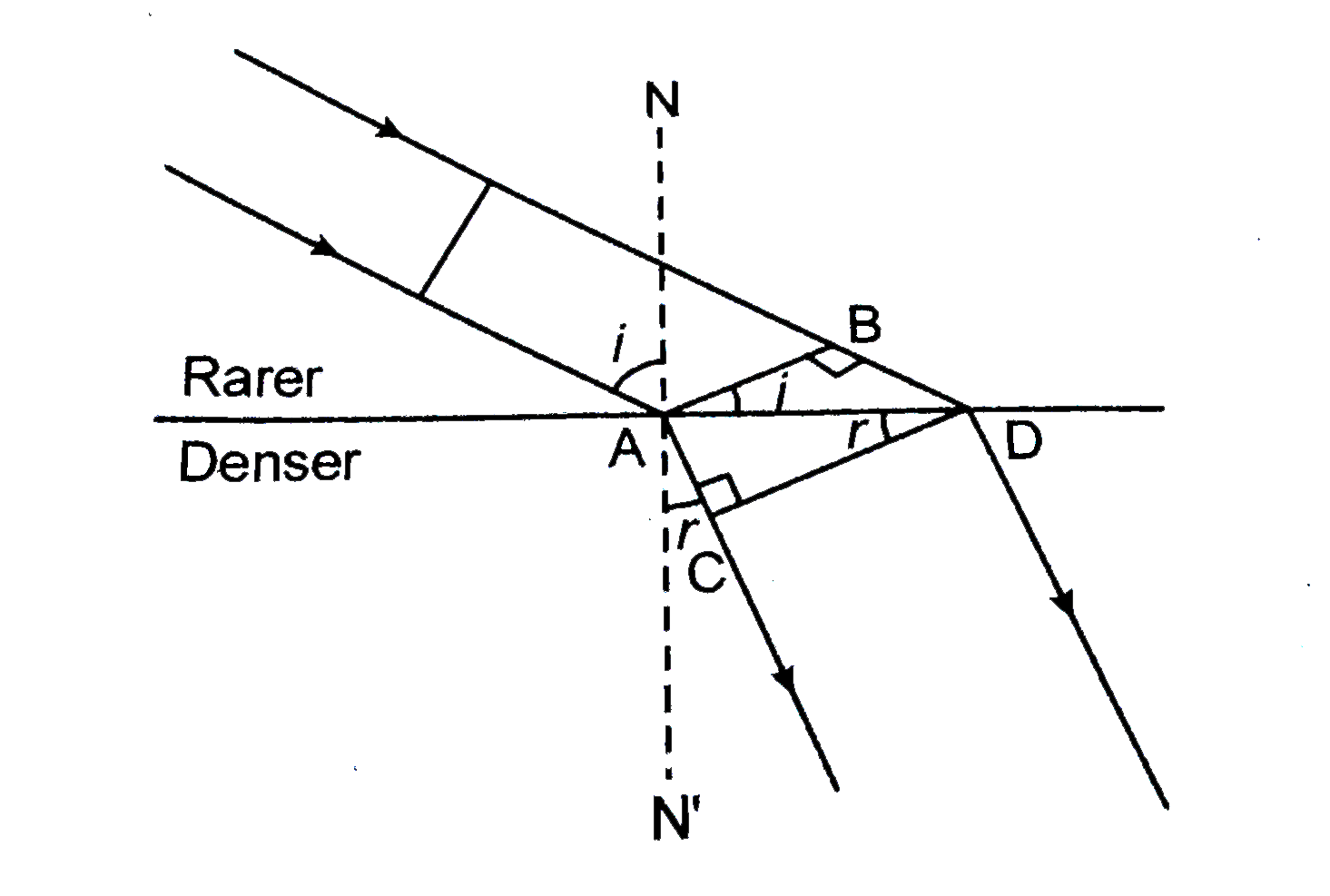Describe the biprism experiment to find the wavelength of the monochromatic light. Draw the necessary ray diagram.
The width of plane incident wavefront is found to be doubled on refraction in denser medium. If it makes an angle of with the normal, calculate the refractive index for the denser medium.
Biprism experiment to find the wavelength of the monochromatic light :
To find the wavelength of the monochromatic light through Biprism experiment, an optical bench is used. The length of optical bench is about one and half meter long and scale is marked along its length. Four adjustable stands carrying the slit(S), biprism (B), lens (L) and the micrometer eyepiece (E) are mounted on optical bench. The slit and the biprism can be rotated about horizontal axis.
The slit, biprism and eyepiece are required to be set at same height by keeping their centres in same line.The slit is made narrow and is illuminated by monochromatic light (viz. sodium vapour lamp). The slit is kept vertical and the stand carrying slit is kept close to the stand carrying biprism. Now, rotate the biprism such that its refracting edge becomes parallel to slit and the interference pattern consisting of alternate bright and dark bands appears in the field view of the eyepiece. After this the wavelength of light can easily be determined by using equation,

B = Biprism
S = Slit
L = Convex lens
E = Eyepiece
Numerical :
Given:
From figure,

(given)
Now,
Refractive index for the denser medium is 1.693.
Related Playlists
- BOOK - GURUKUL PUBLICATION - MAHARASHTRA PREVIOUS YEAR PAPERSCHAPTER - MARCH 2017EXERCISE - SECTION II21videos
MARCH 2017
- BOOK - GURUKUL PUBLICATION - MAHARASHTRA PREVIOUS YEAR PAPERSCHAPTER - MARCH 2015EXERCISE - SECTION-II21videos
MARCH 2015
- BOOK - GURUKUL PUBLICATION - MAHARASHTRA PREVIOUS YEAR PAPERSCHAPTER - OCTOBER 2015EXERCISE - SECTION-221videos
OCTOBER 2015
Similar Questions
The width of a plane incident wavefront is found to be doubled on refractive in a denser medium. If it makes an anlge of 69Å with the normal, calculate the refractive index of the denser medium.
View SolutionDescribe biprism exper4iment to calcularte the wavelength of a monocharomatic light. Draw the necessary ray diagram.
If the critical angle of a medium is sin−1(35), find the po0larising angle.View Solution" Relation b/n refractive index of denser medium and critical angle is "
View SolutionWhen unpolarised light is incident on the interface separating the rarer medium and the denser medium, Brewster angle is found to be 60∘ . Determine the refractive index of the denser medium.
View SolutionWhen unpolarised light is incident on the interface separating the rarer medium and the denser medium, Brewster angle is found to be 60∘ . Determine the refractive index of the denser medium.
View SolutionWhen a light ray from a rarer medium is refracted into a denser medium, its
View SolutionWhen a light ray from a rarer medium is refracted into a denser medium, its
View SolutionA ray of light is incident on denser medium making an angle of 40∘ with the surface. After refraction, it is deviation by 12∘ from its initial path. The refractive index of denser medium will be
View SolutionA ray of light is going from rarer to denser medium so that when angle of incidence is 60∘ reflected and refracted rays are perpendicular to each other.The refractive index of denser medium w.r.t.rarer medium is
View SolutionWhen a ray of monochromatic light enters from rarer medium to denser medium obliquely, the angle of incidence I and angle of refraction r is related is
View Solution

